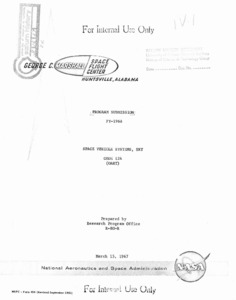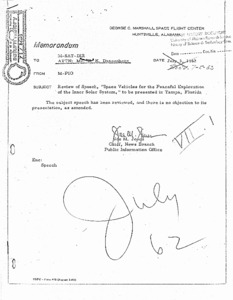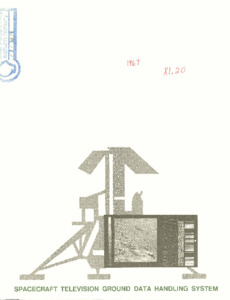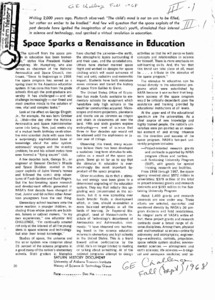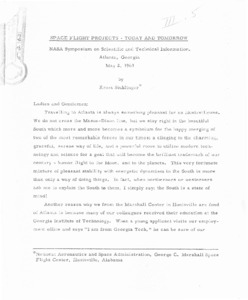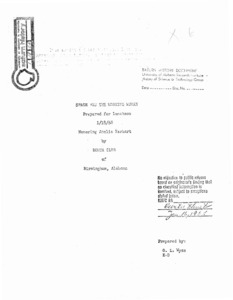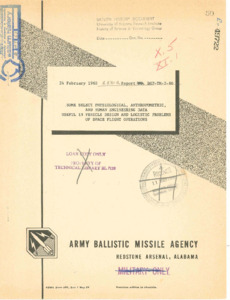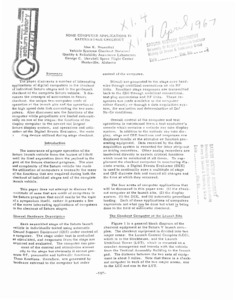
Browse Items (8239 total)
Sort by:
-
"Space vehicle systems" research and technology.
A collection of various graphs, resumes and recordings for space vehical systems. -
Space vehicles for the peaceful exploration of the inner solar system; Memorandum to Mr. K. K. Dannenberg from Joe M. Jones.
Review of speech to be presented in Tampa, FL. Speech included references to slides. -
"Spacecraft television ground data handling system."
A design report which displays and explains how the Spacecraft Television Ground Handling System functions, is designed and what it might be used for in the future. -
"Space sparks a renaissance in education."
An article which comments on the increasing interest in science and education due to the greater understanding of space. -
"Space flight projects - today and tomorrow."
NASA symposium on scientific and technical Information. -
"Space flight : first draft."
Appears to be a rough dfraft with editorial comments and revision notes. Includes references to figures and tables.; Page 31 is missing. Pages 37 through 44 do not exist; there is a note about this on page 36. Page 67 also does not exist. -
"Space and the working woman."
Memorandum prepared for the honoring Amelia Earhart by the Zonta Club, Birmingham, Alabama. -
"Space age management or maintenance of technical capability during a period of retrenchment."
On January 3Ist of this year the United States celebrated its tenth anniversary in Space. In just one decade we have seen our space program climb from an humble beginning (a 30.8-pound payload put into orbit with a jury-rigged rocket) to extra-vehicular-activity and the tremendous Saturn V vehicle capable, of putting 250,000 pounds into low earth orbit. We have seen it grow from a "quick and dirty" operation to a program which at its peak had approximately 380,000 industrial employees in excess of {dollar}5.O billion per year. The marshalling of this great management and technological team generated many "growing pains". A few years ago the hue and cry was, "Where are we going to get sufficient people with scientific knowledge and drive to implement the space program?" Industry, sometimes reluctantly, was pressed into tasks which required managerial and technical skills beyond those they then possessed. -
"Some select physiological, anthropometric, and human engineering data useful in vehicle design and logistic problems of space flight operations."
Report No. DSP-TM-2-60 31 p.; Pages which were blank (not scanned): 2, 26, 28 -
"Some computer applications in Saturn stage checkout."
This paper discusses a number of interesting applications of digital computers in the checkout of individual Saturn stages and in the prelaunch checkout of the complete Saturn vehicle. It discusses the concepts of automation in Saturn checkout, the unique two-computer mode of operation at the launch site and the operations of the high speed data link connecting the two computers. Also discussed are the functions of the computer while propellants are loaded automatically on one of the stages; the functions of the display computer in the newest and largest Saturn display system, and operations and utilization of the Digital Events Evaluator, the main recording device utilized during stage checkout.
